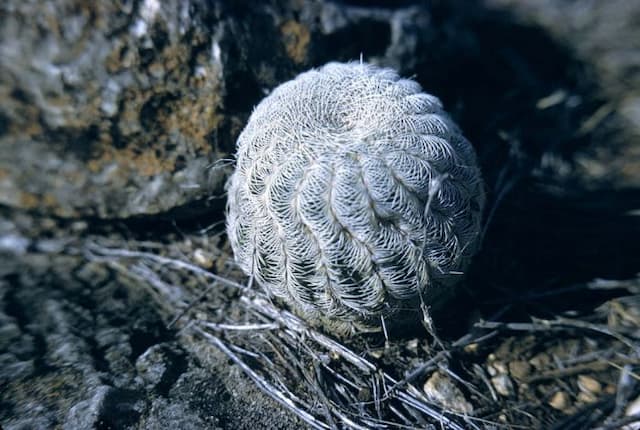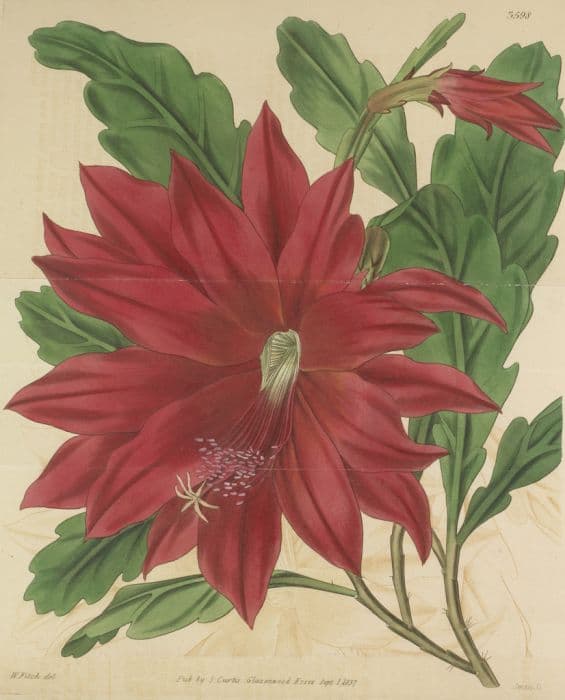Sun cactus Heliocereus speciosus



ABOUT
Heliocereus speciosus is a cactus species that can grow up to 16 feet tall and can spread up to 4-6 feet wide. It has a columnar shape with bright green, ribbed stems that are covered with sharp spines. The spines are typically 1-2 inches long and are arranged in clusters along the stems.
The cactus produces large, showy flowers that can be up to 4-6 inches in diameter. The flowers are typically pink, red, or orange in color and have a funnel-shaped form. They typically bloom in the late spring and summer, and are a popular feature of the cactus.
The cactus also produces small, edible fruits that are typically red or yellow in color. They are about 1-2 inches in diameter and are typically eaten fresh or used in jams and jellies.
It's worth noting that Heliocereus speciosus is a fast-growing cactus and can reach its full size in a few years. It's also important to note that Heliocereus speciosus is a protected species in some countries, and it's important to check local laws before acquiring one.
About this plant
 Names
NamesFamily
Cactaceae
Synonyms
Sun cactus
Common names
Disocactus speciosus
 Toxicity
ToxicityTo humans
Heliocereus speciosus is considered toxic to humans if ingested.
The cactus contains a number of toxic compounds, including alkaloids, which can cause symptoms such as nausea, vomiting, and stomach cramps.
It's also important to note that the cactus's spines are sharp and can cause injury if they come into contact with skin.To pets
Heliocereus speciosus is considered toxic to animals if ingested.
The cactus contains a number of toxic compounds, including alkaloids, which can cause symptoms such as nausea, vomiting, and stomach cramps.
Additionally, the cactus's spines can cause injury if they come into contact with an animal's skin. It is important to keep this cactus out of reach of pets and livestock to avoid any accidental ingestion.
 Characteristics
CharacteristicsLife cycle
Perennials
Foliage type
Evergreen
Flower color
Pink
Height
Up to 16 feet
Spread
Up to 6 feet
Plant type
Succulents
Hardiness zones
11
Native area
Mexico, Honduras and Guatemala
Benefits
 General Benefits
General BenefitsHeliocereus speciosus is known for its large, showy flowers and striking columnar shape, making it a popular ornamental plant;
The cactus produces small, edible fruits that are typically red or yellow in color. They are often used in jams and jellies, or eaten fresh;
Heliocereus speciosus is a drought-tolerant cactus and can survive with minimal water, making it a good choice for xeriscaping;
Heliocereus speciosus is known to purify the air by removing toxins and pollutants from the air, making it a great addition to indoor spaces;
Heliocereus speciosus is resistant to most pests and diseases, making it a good choice for gardeners with limited time or experience. Medical Properties
Medical PropertiesIt is important to note that there is limited scientific research on the medical properties of this cactus and its safety for human consumption:
Heliocereus speciosus has been traditionally used to reduce inflammation and alleviate pain;
The cactus is rich in antioxidants, which may help to protect cells from damage caused by free radicals;
Some studies have suggested that compounds found in Heliocereus speciosus may have anticancer properties;
The cactus may have potential to lower blood sugar levels and improve insulin sensitivity;
Heliocereus speciosus has been traditionally used to boost the immune system and prevent infections.
It is important to note that the medical properties of Heliocereus speciosus mentioned above may vary depending on the conditions and the place where it is grown. Also, it is crucial to consult a medical professional before using it for medicinal purposes as it can be harmful if used in large quantities. Air-purifying Qualities
Air-purifying QualitiesHeliocereus speciosus is known to have air purifying properties.
It is believed that the cactus can remove toxins and pollutants from the air, making it a great addition to indoor spaces. It has been found to be effective in removing formaldehyde, a chemical commonly found in indoor environments, from the air. Other Uses
Other UsesThe fruit of Heliocereus speciosus can be used to make natural dyes for fabrics and other materials;
The cactus's ribs can be used to make walls, fences, or other building materials;
The cactus can be used as fuel for cooking or heating;
The fibers from the cactus's stems can be used to make rope or twine;
The cactus can store water in its stem, which can be used for irrigation or drinking in times of drought;
Heliocereus speciosus can be used to create a natural barrier or to create a natural look in a garden.
 Water
WaterHeliocereus speciosus is a drought-tolerant cactus and does not require regular watering.
Water the cactus when the soil is completely dry, and then water deeply. It is recommended to wait for the soil to dry out for about two weeks before watering again.
In the summer, it may need to be watered more frequently, but in the winter, it may need to be watered less. Light
LightHeliocereus speciosus thrives in full sun to partial shade. It prefers bright, indirect light, but it can tolerate direct sunlight for several hours a day.
 Temperature
TemperatureHeliocereus speciosus is a desert cactus, it prefers warm temperatures between 65-85°F during the day and around 55-65 °F during the night.
 Pruning
PruningHeliocereus speciosus is a slow-growing cactus and does not require regular pruning. However, if the cactus becomes too tall or too wide, it can be pruned. It's recommended to do it in the spring or early summer when the cactus is actively growing. When pruning, use sharp, clean shears to make clean cuts. It's important to wear gloves to avoid getting poked by the spines.
 Soil
SoilHeliocereus speciosus prefers well-draining soil, with a pH range between 6-7.
A cactus potting mix or a mix of coarse sand and potting soil is suitable for growing Heliocereus speciosus.
It's important to ensure that the soil is well-draining to prevent root rot. Repotting
RepottingHeliocereus speciosus is a slow-growing cactus and does not need to be repotted frequently.
It's recommended to repot the cactus every 2-3 years or when it becomes root-bound. It's best to repot in the spring or early summer when the cactus is actively growing. Humidity & Misting
Humidity & MistingHeliocereus speciosus is a desert cactus, it prefers low humidity levels. It's comfortable in normal indoor humidity levels of around 30-50%.
 Suitable locations
Suitable locationsIndoor
Heliocereus speciosus can be grown indoors as a houseplant if provided with the right conditions.
It prefers bright light and warm temperatures between 65-85°F during the day and around 55-65°F during the night. It's important to keep the soil well-draining, and to avoid over-watering. It's also important to provide proper ventilation to prevent the growth of mold and mildew.Outdoor
Heliocereus speciosus can be grown outdoors in warm, dry climates.
It prefers full sun to partial shade, and well-draining soil. It's tolerant of drought, and can survive with minimal water. It's important to protect it from frost and freezing temperatures, as it can be damaged if exposed to frost. It's also important to protect it from pests and diseases, and to provide proper ventilation to prevent the growth of mold and mildew.Hardiness zone
12 - 13 USDA
 Life cycle
Life cycleThe cactus seed germinates after being planted in well-draining soil. Germination typically occurs within 1-2 weeks.
The cactus seedling will develop its first set of leaves, and begin to grow roots. This stage typically lasts for several months.
The cactus will continue to grow, developing a thick stem and more leaves. This stage typically lasts for several years.
The cactus will reach maturity, and will begin to produce flowers and fruit. This stage typically lasts for several decades.
As the cactus ages, it will begin to slow down its growth, and may produce fewer flowers and fruit. This stage can last for several decades. Propogation
PropogationPropogation time
Spring - early summer
By OFFSETS:
Heliocereus speciosus will produce offsets (small side shoots) at the base of the plant. These offsets can be removed and planted in their own pot.
By CUTTINGS:
Heliocereus speciosus can be propagated by taking stem cuttings. To do this, remove a stem cutting, let it callus over for a few days, and then plant it in well-draining soil.
By SEEDS:
Heliocereus speciosus can be propagated by seed. To do this, collect the seeds, plant them in well-draining soil, and keep them warm and moist until they germinate.
 Pests
PestsSpider mite, Scale insects, Mealybug
 Diseases
DiseasesRoot Rot








